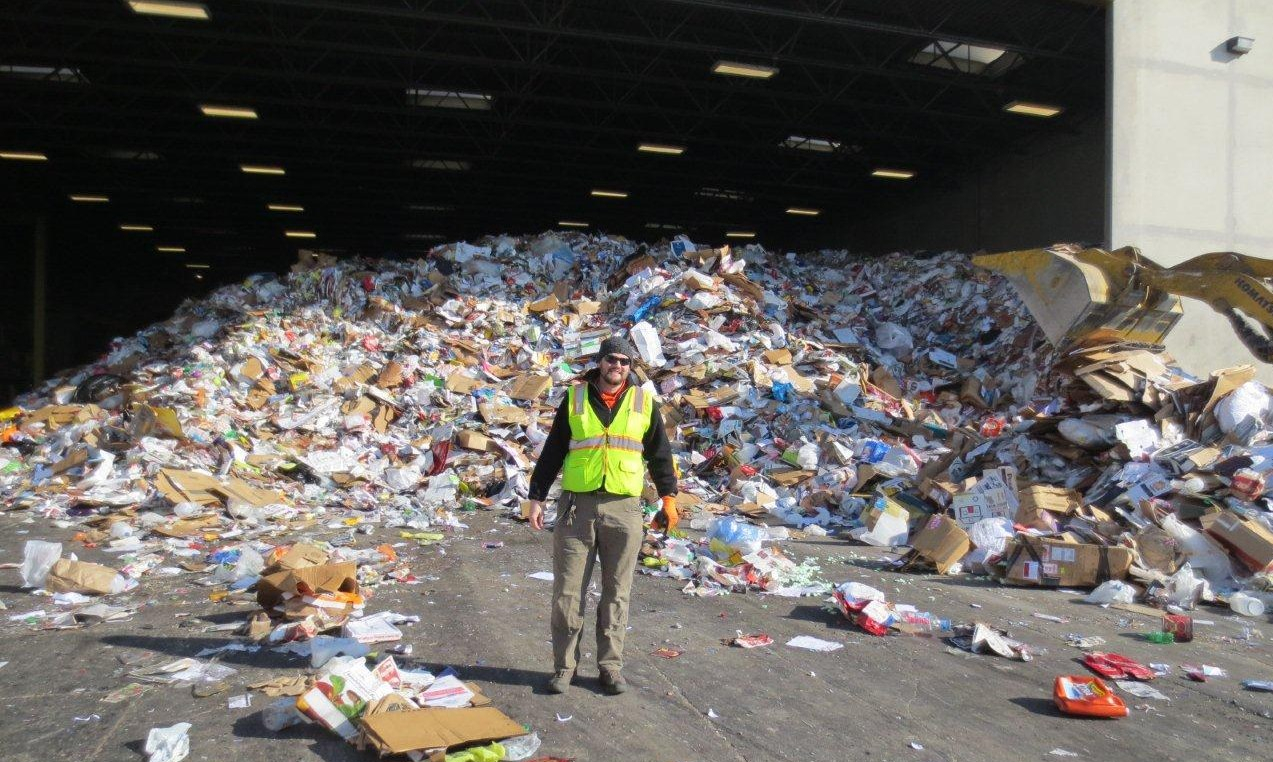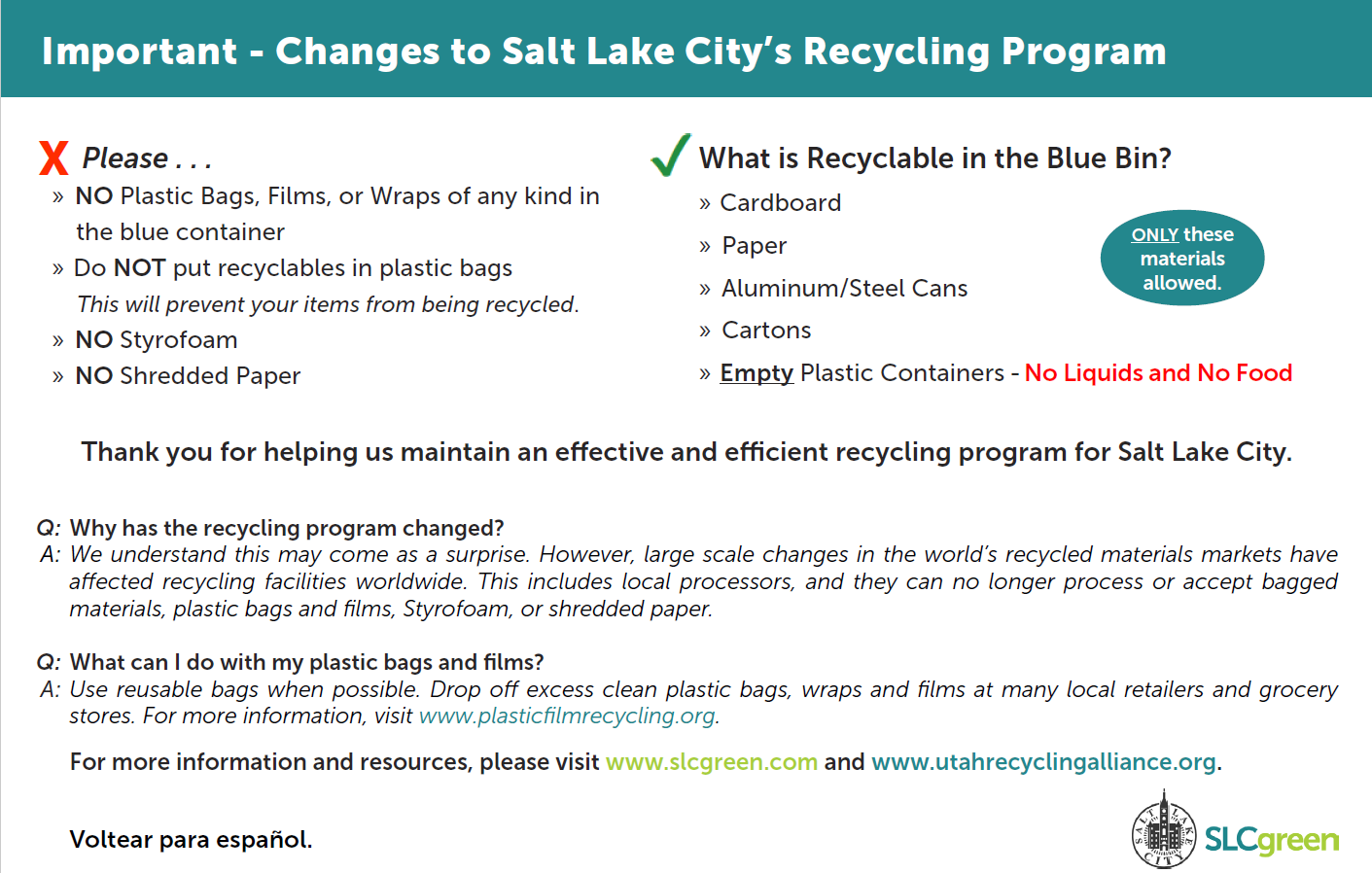You may have heard that much is changing in the recycling world these days. For the last couple decades, China has accepted the majority of the world’s recycled materials– whether that’s plastic, paper, cardboard, or metal.
Our recycling programs evolved over that time to encourage more and more recycling of more and more items, with not so much attention focused on “contamination.” Contamination means that there are items in the recycling load that shouldn’t be there (like garbage or leaves or shoes or hoses . . . you get the picture). It can also mean that otherwise recyclable items are dirty and therefore unusable (oily pizza boxes for example).
Meanwhile, our society has continued to progress towards more packaging, more disposables, and more single-use items.

Globally, we produce upward of 448 million tons of plastic each year, 40% of which is destined only to be used one time. What?!?!
But if we threw those plastic plates or cups in the recycling, that was okay, right? Throwing something in the recycling bin became the equivalent of not even using it in the first place!
But now China has effectively stopped accepting the world’s recycling and the U.S. is left with a lot of material and a system that isn’t designed to deal with newer, stricter materials standards.
Municipalities across the country are grappling with what to do. Some have had to drastically amend their recycling programs or cancel them. (See also “What the Chinese import policies mean for all 50 states”)
In Salt Lake City, disruption of our recycling program has so far been minimal.
You may have seen a recent notice on your recycling container advising you of the latest changes:
- As we announced in January, please do not put plastic bags, films, or wraps of any kind in the blue container.
- Do not enclose recyclables in plastic bags or kitchen bin liners (i.e. do not “bag your recyclables.”) This will prevent your items from being recycled.
- No expanded polystyrene (“Styrofoam“)
- No shredded paper.

Eliminating these items from our recycling stream is now required in order to meet stricter standards and to ensure the health of Salt Lake City’s overall recycling program.
Please know that, while we have had to implement these new restrictions, we continue to work very hard with our processors to secure vendors to accept as much other material as possible.
We hope to minimize further changes to Salt Lake City’s recycling program. However, please stay connected with us in case additional modifications of the accepted items list need to be made.
- Newspaper and newspaper inserts
- Cardboard boxes, shoe boxes, cereal boxes, paper tubes
- Magazines and phone books
- Aluminum cans
- Steel (tin) food cans
- Plastic containers
- Plastic-coated cartons
- Junk mail, office paper, envelopes
- Aerosol cans
If it’s not on the list, it should not go in the blue container. (“When in doubt, throw it out.”) However, we do encourage you to utilize specialized collection opportunities, like the CHaRMs hosted by the Utah Recycling Alliance or other organizations for hard-to-recycle materials that cannot go in the blue bin.
And that brings us to an important last point.
Recycling is still the cornerstone of a successful waste management program and is essential to a sustainable community. It conserves water, reduces greenhouse gas emissions, and saves raw material among other benefits.
Salt Lake City collects recyclables from an estimated 45,000 residential homes, and 1,100 small businesses and multi-family complexes every day, five days per week. An average of 750 tons of material are recycled each month.
Recycling this amount of material each month saves the equivalent of:
- 7,379 mature trees (91,427,200 sheets of copy paper)
- 3,030 cubic yards of landfill space (the annual space needed for 3,891 people)
- 2,353,583 kWh of electricity (enough to power the needs of 225 homes)
- 2,604 metric tons of greenhouse gas emissions
- 4,011,430 gallons of water (enough to meet the daily needs of over 50,000 people).
(Source: Waste Management, May 2018 stats)
The benefits of recycling clearly outweigh the current challenges we’re facing.
However, recycling has always been the last of the “Three R’s” (Reduce, Reuse, Recycle), but that order has become ever-more important in the wake of the global crisis in recycling markets.
You can also help by exercising your power as a consumer to choose less waste.
This brings us to a fourth “R”– “Refuse.” Refuse single-use items. Shop in bulk, minimize packaging, and use durable, reusable products. Ask your favorite retailers and businesses to carry products with minimal packaging and to consider their own policies around disposables. (Need some personal inspiration? Check out this woman’s story!)
Thank you for helping SLCgreen provide the most efficient and effective recycling program possible for our community.


